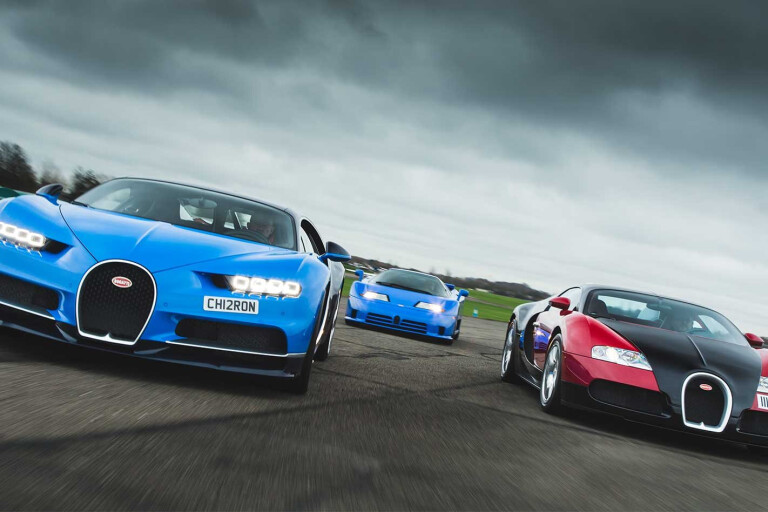
It’s hard to tell which is racing faster, your heart or your head.
The runway is straight and hypnotic, and you have the better part of 1500 horsepower to harness. The problem isn’t so much getting up to speed, more the slowing down because we cannot use the full length of our airfield playground.
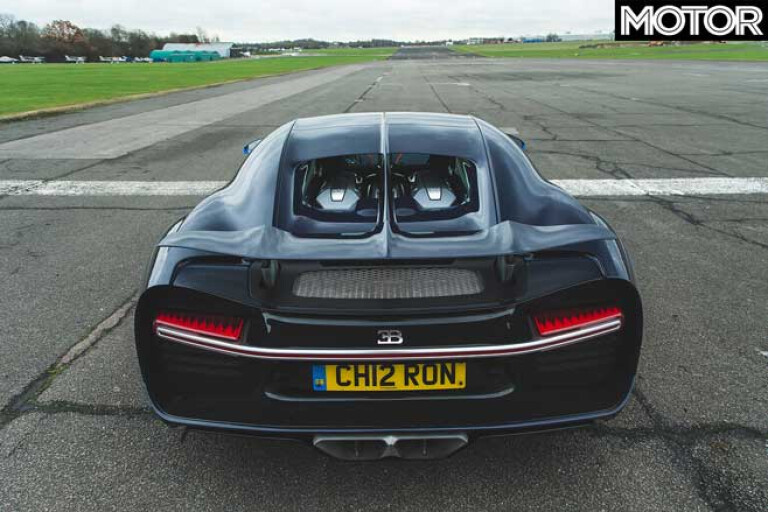
Early pluck has given way to intestine-wrangling tension – not that there’s anyone close enough to hear you curse. It’s just you, a Bugatti Chiron that is limited to 420km/h, and an ugly scar of blacktop that doesn’t feel level, even on foot. Take a breath. You know the drill. Word to the wise: if you absolutely have to talk to a car, for best results adopt a respectful tone. Launch… and we’re done with complete sentences.
Syllables bleed together in incomprehensible babble as self-doubt dissolves in rapids of adrenaline. Acceleration builds with brutal menace, each tug of the right paddle ushering in more commotion. The stats insist it will reach 200km/h from standstill in 6.5sec, but presumably that’s in the dry.
It has been raining for much of the past week. If anything, it feels faster, to the point at which you realise that, yes, you just might be out of your depth, and by several fathoms. Nevertheless, you keep your foot in, at least until it’s time to brake. Please, for the love of god, brake or we’ll be wearing a Nissen hut.
So there you have it, the Chiron is fast. Who knew?

The thing is, this car operates at the outer limits of an envelope already pushed beyond endurance by the models that preceded it – the EB110 and Veyron. You see, these ‘modern’ Bugattis are outliers in the hypercar firmament; super-exclusive exotics that, in their own way, are masterpieces of engineering but also profoundly pointless. The Sisyphean effort invested in making cars that defy the laws of physics is of little actual worth in the real world. It’s all about bragging rights, and has been for the past three decades.
In a very roundabout way, it was Ferruccio Lamborghini – a man who in his own time upended the exotic market – who initiated the EB110. A discussion at the 1986 Turin Salon between the latter-day vintner and big-haired car dealer/importer Romano Artioli about resurrecting Bugatti led to further discussions, from which the nucleus of what we now know as the EB110 emerged.
Lamborghini soon lost interest, but a highly motivated Artioli persuaded the French state-owned SNECMA aerospace company to sell the rights to the name. Bugatti Automobili was registered in Italy in October 1987. All that was needed was a product to sell.
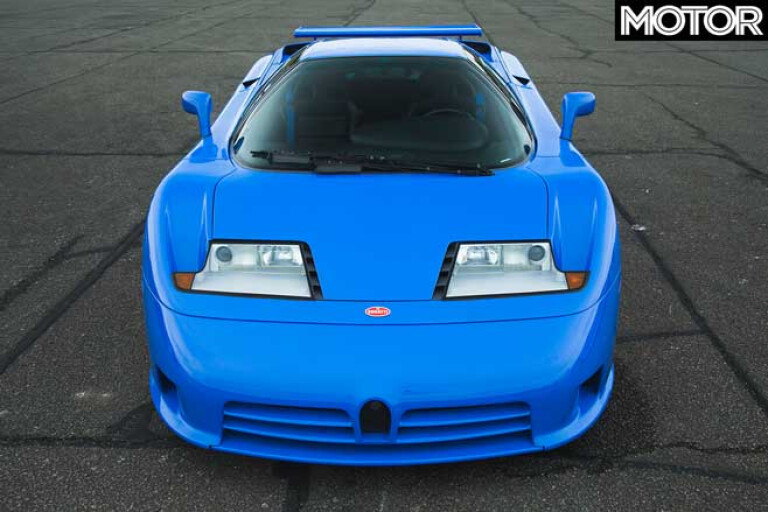
The EB110’s specification made other supercars look unimaginative. The basic layout was mapped out by soon-to-be-axed Paolo Stanzani, with early prototypes featuring aluminium monocoques, although these made way for carbonfibre tubs manufactured by French aeronautics company Aerospatiale. The superstructure was then skinned in hand-formed aluminium.
Then there was the engine, an all-alloy, 60-valve V12 furnished with four tiny IHI turbochargers. Power was transmitted to all four wheels via a six-speed gearbox, while suspension was by conventional double wishbones and coil springs with twin spring/damper units at either end. Brembo provided the brakes, and Michelin developed special tyres for a machine that, during the homologation stage, established a production-car speed record of 342km/h.
Unveiled at the Place de Defence in Paris on 14 September 1991 – to mark Ettore Bugatti’s 110th birthday, hence the initials and numerical designation – all looked rosy. The EB110 GT was officially the fastest road car available, and arguably the most sophisticated.
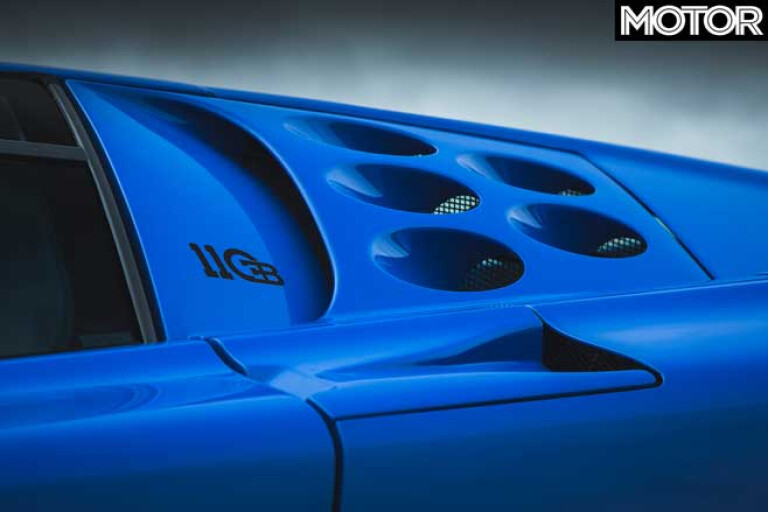
Then the global economy tanked. The proposed Giorgetto Giugiaro-styled EB112 super-sedan was quietly dropped as production of the EB110 coughed and spluttered, with sales never getting close to the envisaged 300 units per year. Deliveries began in December 1992 and ended in September ’95. A mere 85 ‘entry level’ GT editions were made (one in right-hand drive), along with 30 carbonfibre-bodied Supersports and 13 test hacks.
Following the bankruptcy sale, race team principal Jochen Dauer acquired and completed a batch of partially built cars, while adding a few tweaks of his own. Volkswagen subsequently acquired the rights to the name and released a flurry of concept cars before creating the Veyron, a remarkable machine that was essentially a vanity project dreamed up by Ferdinand Piech. The VW Group czar gave his engineers a simple brief: build a car packing 1000bhp that can exceed 250mph, or 402km/h. No pressure…
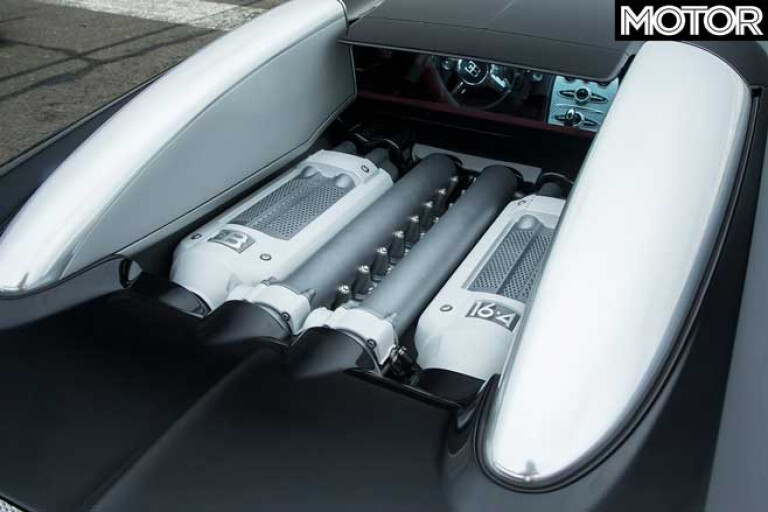
Scroll forward to 1999 and there was a styling proposal, an 18-cylinder engine and only the vaguest notion of what to do next. It wasn’t until 2001 that the VW board agreed to build the Veyron in series, with the first prototype being completed in 2003. Power now came from a 7993cc 16-cylinder ‘W’ unit that essentially comprised two 4.0-litre V8s on a common crank. This was coupled to a Ricardo-developed dual-clutch, direct-shift, seven-speed transmission. Like its EB110 predecessor, it came with permanent four-wheel drive.
Following repeated delays, the Veyron 16.4 was officially revealed in 2005 with a claimed power output of a then unheard of 1001PS (987bhp, or 736kW). In April of that year, the model was clocked at 408.5km/h at VW’s Ehra-Lessien test track near Wolfsburg.
Inevitably, other variants followed, not least the targa-style Grand Sport and Grand Sport Vitesse models, plus of course the heavily re-engineered Super Sport, which boasted 885kW and a top speed of 431km/h. Oh, and a price tag of almost $4 million.
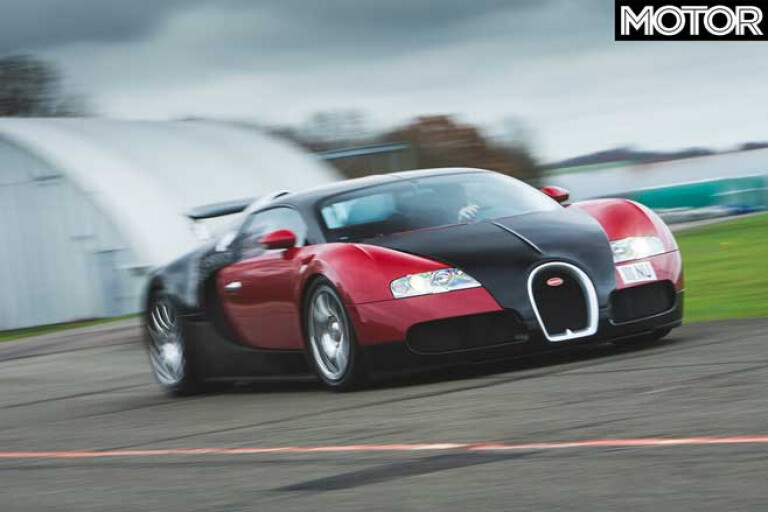
All told, 407 Veyrons were made to 2013, each losing the parent company a fortune, but VW appeared happy to toss millions more onto the pyre with the creation of its replacement, the otherworldly Chiron. Mirroring Piech’s prior mandate, former Porsche R&D chief turned Bugatti/Bentley boss Wolfgang Durheimer gave his factotums a simple instruction: “Make the new car better than the Veyron in every respect.”
The recipe was familiar: quad-turbo W16 engine, carbonfibre body structure, Ricardo-devised transmission and Haldex all-wheel drive. This was more than a Veyron makeover, however. Much, much more.
Just consider the stats: peak power – 1103kW – arrives at 6700rpm. There’s 1600Nm of torque available from 2000 to 6000rpm. It can accelerate to 100km/h from a standstill in 2.5sec and 300km/h in 13.6sec. Oh, and in one independently verified record run, a Chiron was taken from 0-400km/h in 32.6sec, before returning to a standstill 9.4sec later.

Nevertheless, when the Chiron was first revealed in 2016, some quarters of the media couldn’t help but point out that it was slower than the Veyron Super Sport. Bugatti’s retort was unambiguous: the car was limited to 420km/h for, ahem, ‘safety reasons’. The tyres might go pop at 421.
Without the restrictor, and ignoring the rubber-related issue, it could reach at least 445. And of course now we know the Chiron is capable of at least 490km/h, after a ‘long-tail’ prototype – now officially confirmed as the Chiron ‘Super Sport 300 Plus’ – broke through the fabled 300mph barrier in the hands of test driver Andy Wallace at Ehra-Lessien in August.
Which brings us to today, and the theatre of all three Bugattis gathered together for a shootout like no other.
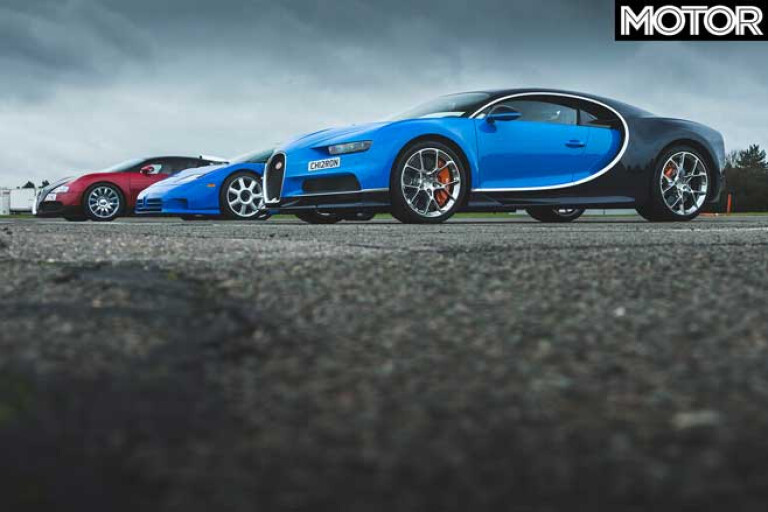
What strikes you about the EB110 in particular is that it’s a lot smaller than you’d think, being 15cm shorter than a Ferrari 488. This 1994 SS edition – 450kW rather than 410kW for the GT – is a thing of wonder, if perhaps no great beauty.
Pull down the scissor door and the base of the window is at neck level. Headroom is surprisingly tight, but the leather-clad seats are ultra-comfy, the pedals are only slightly offset towards the centre, and the instruments are easily visible. It even has adequate ventilation, which is something of a novelty for exotica of this vintage. There are only a few ergonomic quirks, but you would almost be disappointed if there were none.
Expecting the V12 behind you to erupt with surround-sound fanfare, there’s just a muted burble. It’s all very civilised. So far, so ordinary. But then comes the good bit. Hit 4000rpm from a standstill and the turbos start to inhale air.
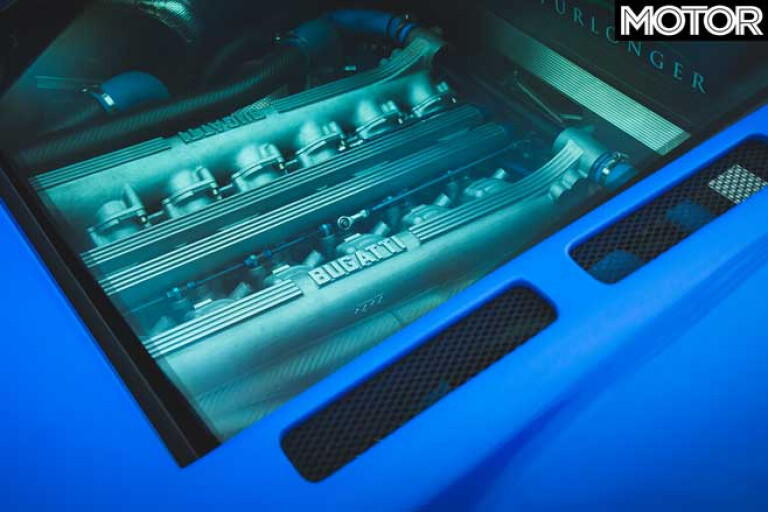
Acceleration builds abruptly but effortlessly. Back off and you can hear the quartet of turbos exhale sequentially left to right, left to right. Power on again, keep the throttle nailed open this time, and forward thrust is astounding. Peak torque (650Nm) arrives at 4250rpm and the four-wheel drive arrangement and broad Michelins ensure otherworldly levels of grip.
There are no creaks, groans or clunks through the structure. The suspension soaks up the worst surface imperfections and, at ‘enthusiastic’ speeds, the EB110 doesn’t intimidate. The gearchange is slick, the power-assisted steering – with just 2.8 turns lock to lock – is far from edgy. That a car packing more than 600 horsepower can be this easy to drive is extraordinary given its vintage. Remarkably, it was criticised in period for being too refined.

Then there’s the Veyron. Nothing about this car is in the realms of the normal – not least the styling, which still polarises opinion. Open the (conventional) door, stoop to enter while also negotiating the wide sill, and the cockpit is a work of art in itself. The carbonfibre seats are swathed in hides from pampered cows, the centre console is made of a single piece of aluminium, while the instruments are jewel-like in appearance, if not necessarily easy to read at a glance. It’s supremely comfortable in here, even if there are a few built-in blind spots.
The acceleration of a Veyron is immense. To give perspective, if a Veyron set off from a standing start 10 seconds after a McLaren F1 – in which time the F1 will already be travelling at 209km/h – the Bugatti would reach 322km/h at exactly the same time. With that in mind just in time for blast off, you feel every heartbeat thump in your temples. Engage each electronic nanny feature and the Veyron bolts off the line with nothing so gauche as wheelspin. Instead, the tail squats ever so slightly and you grip the steering wheel somewhat tighter than you might normally, but it doesn’t writhe in your hands.

You accept a certain amount of chaos and confusion as givens, but you don’t white-knuckle the Veyron as in so many supercars of old – molten grip and perfectly weighted steering see to that – but the sheer punch broils your mind and turns your mouth to dust. Once you have overcome your awkwardness, you appreciate the Veyron’s abilities all the more.
Track limitations mean v-max runs are out of the question today, but from experience we know the Veyron doesn’t threaten to take flight north of 250km/h. And that it’s a lot easier to navigate through cityscapes than you might imagine, so long as you remember to change the suspension settings from Handling to Standard. You really can potter in a Veyron.
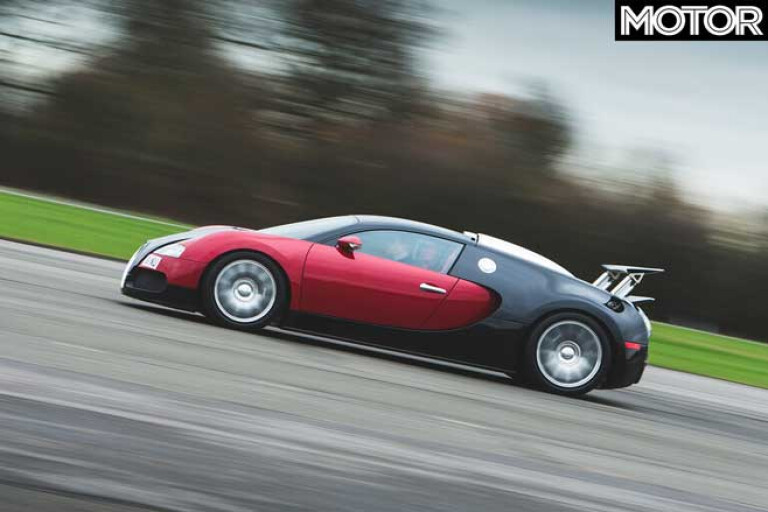
The same is true of the Chiron, perhaps even more so. There is so much about this car that invites hyperbole, but, like the Veyron, you can’t help but be surprised by how easy it is to drive at low speeds. The electrically assisted steering is light and sensibly geared, the wheel having been honed from a single billet of aluminium. Switch the wheel-mounted rotary dial to Handling and there is greater heft, but you still feel as though you’re driving a leather armchair.
You can’t help but be blown away by the attention to detail, even if those details might not be to all tastes. For starters, the badge is made of genuine sterling silver – and, we’re told, the audio tweeters contain real diamonds. Yes, really. The craftsmanship here is breathtaking, as befits a car costing what it does. (A lot.)
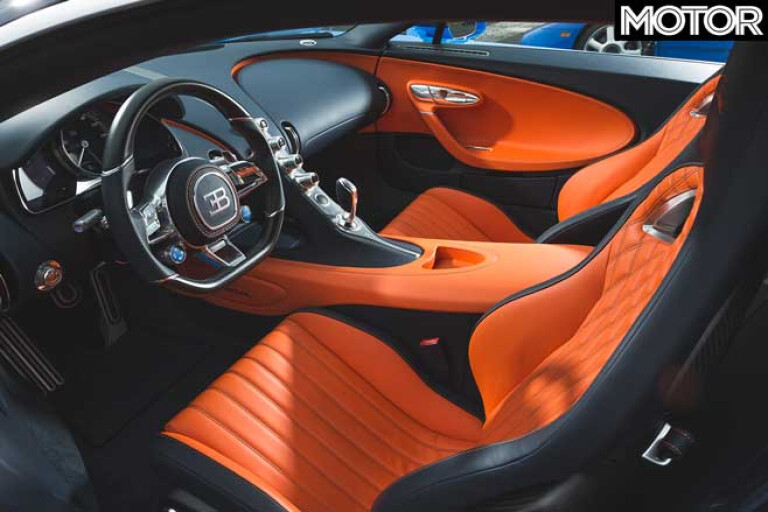
Time behind the wheel of the Chiron is all too fleeting, yet the opportunity to drive it at anything approaching real speed proves as memorable as it is brief. You may be familiar with supercars, but nothing can match the sense of slingshot delivery as the Chiron hooks up. It’s internal-organ-bruising stuff. From rest, three-figure speeds arrive in less time than it takes you to read… oh, too late. And the brakes – eight-piston calipers up front, six out back – stop you with the sort of force that threatens to turn you inside-out.
It isn’t just the straight-line stuff that blows your mind, either. Emerge from a bend with your right foot only half buried and torque is transferred with the minimum of fuss. It’s just that your neck now has a crick in it. As with the other two, it is hard not to lapse into blissed-out reverie trying to describe how amazing the Chiron is to drive.

There will no doubt be some who believe these cars are leeching off the accomplishments of the original Bugatti marque, that they are unbefitting of the name, regardless of how fast they are. We would counter that they simply add further lustre.
And the really controversial bit? If we had the wherewithal, the slowest car here would be our pick. The EB110 is, in just about every quantifiable way, the least-good car of the trio, but it worms its way into your affections. It might not be perfect, but it’s a car you love rather than admire. Which is how it should be.
Fast Facts
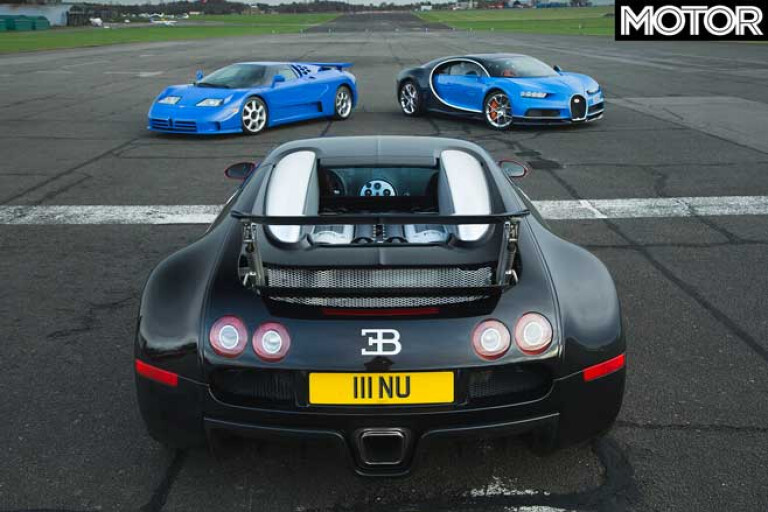
| Bugatti EB110 Supersport | Bugatti Veyron | Bugatti Chiron | |
| Body | 2-door, 2-seat coupe | ||
| Drive | all-wheel | ||
| Engine | 3500cc V12, DOHC, 60v, quad-turbo | 7993cc W16, DOHC, 64v, quad-turbo | |
| Bore x Stroke | 81.0 x 56.6mm | 86.0 x 86.0mm | |
| Compression | 7.5:1 | 8.3:1 | n/a |
| Power | 450kW @ 8250rpm | 736kW @ 6000rpm | 1103kW @ 6700rpm |
| Torque | 650Nm @ 4250rpm | 1250Nm @ 2200-5500rpm | 1600Nm @ 2000-6000rpm |
| Power/Weight | 286kW/tonne | 390kW/tonne | 552kW/tonne |
| Transmission | 6-speed manual | 7-speed dual-clutch | |
| Weight | 1570kg | 1888kg | 1995kg |
| Suspension | double wishbones, adjustable gas dampers, coil springs, anti-roll bar (f/r) | double wishbones, progressive-rate dampers, coil springs, anti-roll bar (f/r) | double wishbones, adaptive dampers, coil springs, anti-roll bar (f/r) |
| L/W/h | 4400/1960/1125mm | 4462/1998/1204mm | 4544/2038/1212mm |
| Wheelbase | 2550mm | 2710mm | 2711mm |
| Tracks | 1550/1618mm (f/r) | 1714/1617mm (f/r) | 1749/1661mm (f/r) |
| Steering | hydraulically assisted rack-and-pinion | electrically assisted rack-and-pinion | |
| Brakes (f) | 332mm ventilated discs, 4-piston calipers | 400mm ventilated/drilled carbon-ceramic discs, 8-piston calipers | 420mm ventilated/drilled carbon-ceramic discs, 8-piston calipers |
| Brakes (r) | 332mm ventilated discs, 4-piston calipers | 380mm ventilated/drilled carbon-ceramic discs, 6-piston calipers | 400mm ventilated/drilled carbon-ceramic discs, 6-piston calipers |
| Wheels | 18 x 9.0-inch (f); 18 x 12.0-inch (r) | 20 x 9.5-inch (f); 21 x 14.4-inch (r) | 20 x 10.0-inch (f); 21 x 13.5-inch (r) |
| Tyre Sizes | 245/40 ZR18 (f); 325/30 ZR18 (r) | 265-680 ZR500A (f); 365-710 ZR540A (r) | 285/30 ZR20 (f); 355/25 ZR21 (r) |
| Tyres | Michelin Pilot SX | Michelin Pilot Sport PS2 PAX | Michelin Pilot Sport Cup 2 |
| Price | $2–$3.2 million | $4 million | $7.4 million |
| Pros | More character than its poseur siblings | Owning an icon of automotive engineering | Ultimate combination of performance and comfort |
| Cons | Good luck if something breaks on it | $50,000 for a replacement set of tyres | Handing over about $4.5m to the taxman |
| Rating | 5 out of 5 stars | 4.5 out of 5 stars | 4.5 out of 5 stars |

COMMENTS